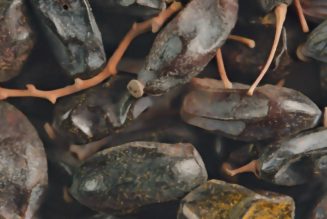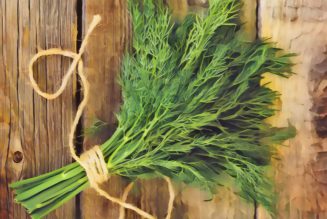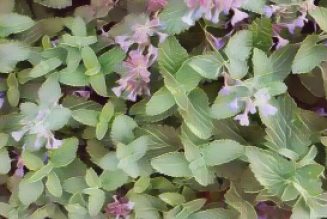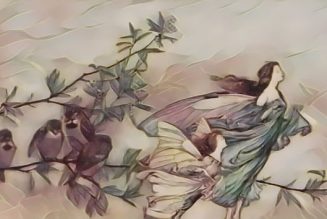Moonwort—Botrychium lunaria—is a small, enigmatic fern steeped in magic and mystery, cherished by herbalists and witches alike for centuries. Its name comes from the distinctive, crescent-shaped leaflets that resemble tiny half-moons, giving the plant an ethereal, lunar quality. (short pause) But beneath its delicate appearance lies a world of botanical intrigue and ancient lore.
Botanically, moonwort is a perennial fern, rarely exceeding three inches in height, yet its structure is remarkably unique among ferns. The plant is divided into two distinct parts: the lower, sterile frond bears the iconic moon-like leaflets, arranged alternately along a single, slender stem, while the upper, fertile frond rises above, bearing a cluster of rounded, bead-like spore cases. These spore cases, or sporangia, are arranged in a way that resembles a miniature bunch of grapes, and when mature, they split open to release fine, dust-like spores into the summer air. (pause) The roots of moonwort are simple and fibrous, anchoring the plant in rocky or grassy soils, and allowing it to thrive in some of the most challenging environments.
Moonwort’s growth habit is modest and easily overlooked. It emerges in late spring, often blending into its surroundings, and thrives in well-drained, open habitats. You’ll find it in sand dunes, quarries, inland cliffs, open woods, and meadows—especially where the soil is alkaline, though it is not strictly required. (short pause) Its ability to survive in both exposed and sheltered locations speaks to its resilience, and its subtle presence rewards those who take the time to look closely at the landscape.
In Britain, moonwort is the only species of its kind, and is sometimes called “common moonwort” elsewhere to distinguish it from its relatives. Its distribution is patchy, with strongholds in Scotland, Wales, and the north and west of England. Sadly, much of its lowland habitat in England was lost before 1930, and its decline continues, making it a plant of conservation concern. It can still be found in protected reserves such as Deep Dale. (pause) In other parts of the world, moonwort’s relatives are found in North America, Europe, and Asia, each with their own subtle variations, but all sharing the same mysterious charm.
The lifecycle of moonwort is subtle and mysterious. After releasing its spores in the summer months—June, July, and August—the plant retreats, its presence marked only by the faintest trace until the next season. Its roots are simple and fibrous, anchoring it in rocky or grassy soils. (short pause) The spores themselves require a symbiotic relationship with soil fungi to germinate, a process that can take several years. This hidden partnership adds another layer of mystery to moonwort’s existence, as entire populations may lie dormant underground, waiting for the right conditions to emerge.
Throughout history, moonwort has been surrounded by folklore and magical associations. In medieval times, it was believed to possess the power to open locks and unshoe horses, making it a favorite among alchemists and cunning folk. Nicholas Culpeper, the famed 17th-century herbalist, wrote of its ability to “open locks, and unshoe such horses as tread upon it,” recounting tales of horses mysteriously losing their shoes where moonwort grew. (pause) Some blacksmiths even refused to shoe horses in areas where moonwort was known to grow, fearing the plant’s uncanny influence.
Witches and wise folk valued moonwort for its transformative and protective properties. It was used in charms and amulets, believed to aid in shape-shifting, unlocking secrets, and enhancing prophetic dreams. Some traditions held that carrying moonwort could grant safe passage through the spirit world or reveal hidden truths. (short pause) In some regions, moonwort was gathered by the light of the full moon, its lunar associations believed to enhance its magical potency. (pause) The plant was also thought to be a favorite of the fae, and those who found moonwort growing wild were said to be blessed with good fortune and insight.
In herbal medicine, moonwort was sometimes used for its astringent qualities, though its magical reputation far outshone its practical uses. It was believed to staunch bleeding and heal wounds, and some old herbals recommended it for treating bruises and sprains. (pause) However, its rarity and the difficulty of finding it meant that moonwort was more often revered than harvested, and many herbalists considered it a plant to be protected rather than used.
Today, moonwort remains a symbol of the moon’s mystery and the hidden power of the natural world—a true treasure for those who walk the path of witchcraft and plant lore. Its presence in a wild place is a reminder to honor the subtle and the unseen, to look beyond the obvious, and to trust in the quiet magic that weaves through the earth.
Anecdotes abound of witches and herbalists who sought out moonwort for rituals of transformation, protection, and divination. Some modern practitioners use moonwort in dream pillows or tinctures to enhance intuition and connect with lunar energies. Others craft protective charms from its dried fronds, tying them with silver thread and hanging them above doorways to ward off negativity and invite blessings.
Whether you seek moonwort for its botanical rarity, its magical associations, or its place in the folklore of the British Isles, this tiny fern invites you to look closer, to honor the subtle and the unseen, and to remember the ancient wisdom woven into the wild places of the earth. (long pause) In the quiet presence of moonwort, we are reminded that the most powerful magic is often hidden in the smallest and most unassuming of forms.












